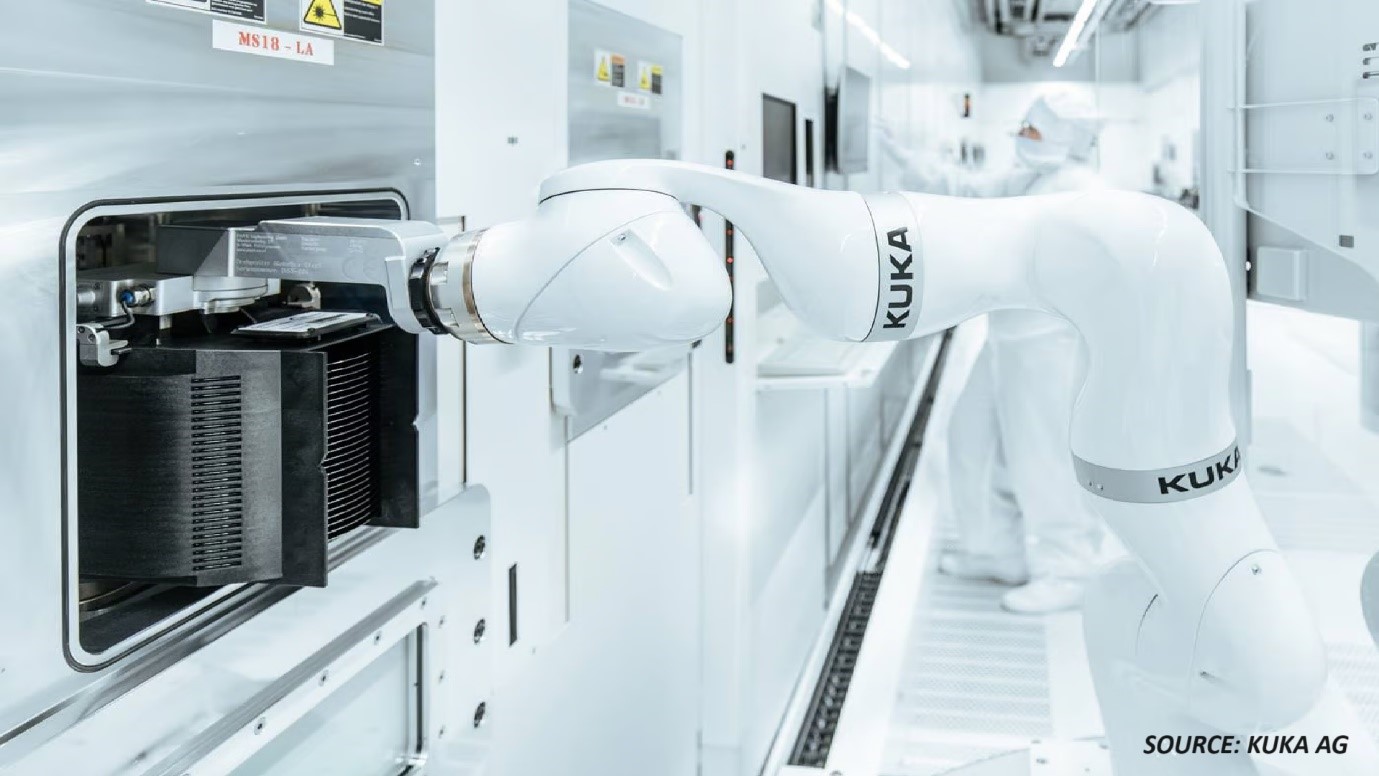
Plug-in Hybrid Electric Vehicles (PHEV) Market by Type (Passenger Cars and Light Commercial Vehicles), by Powertrain (Series Hybrid, Parallel Hybrid, and Combined Hybrid), by Power Source (Stored Electricity and On-board Electric Generator), by Vehicle Type (Passenger Cars, Commercial Vehicles, Two Wheelers, and Others)- Global Opportunity Analysis and Industry Forecast 2024-2030
Plug-in Hybrid Electric Vehicles Market Overview
The Plug-in Hybrid Electric Vehicles (PHEV) Market size was valued at USD 210.20 billion in 2023 and is predicted to reach USD 287.26 billion by 2030 with a CAGR of 4.6% from 2024-2030.
A plug-in hybrid electric vehicle (PHEV) combines an internal combustion engine (usually fueled by gasoline or diesel) with an electric motor and a rechargeable battery. Unlike conventional hybrids, PHEVs can be plugged into an external power source to charge their batteries, in addition to being charged through regenerative braking while driving.
This allows PHEVs to operate in electric-only mode for a certain distance before the internal combustion engine is engaged, thereby reducing fuel consumption and emissions compared to traditional vehicles. PHEVs offer the flexibility of using both electricity and conventional fuels, providing drivers with increased efficiency and potentially lower operating costs.
Market Dynamics and Trends
The increasing global demand for electric vehicles (EVs) is a significant driver behind the growth of the plug-in hybrid electric vehicle (PHEV) market. As per the latest report published from the International Energy Agency, the demand for EVs and PhEVs is growing significantly across the globe, with more than 10 million vehicles sold in 2022. As more consumers and businesses seek to reduce their carbon footprint and transition towards greener transportation options, the popularity of EVs and PHEVs continues to rise.
Moreover, government policies and incentives aimed at reducing carbon emissions and air pollution by promoting the use of environmentally friendly vehicles are further accelerating the growth of the plug-in hybrid electric vehicles (PHEVs) market.
Governments across the globe is offering subsidies, tax incentives, and rebates for PHEV purchases over traditional gasoline-powered ones. Additionally, regulations such as emission standards and vehicle electrification targets are further encouraging automakers to invest in PHEV technology, contributing to the overall growth of the market.
Furthermore, technological advancements, such as the increasing development of charging infrastructure and improvements in electric vehicles, are boosting the growth of the plug-in hybrid electric vehicles (PHEVs) market. The expansion of charging infrastructure, including the deployment of fast chargers and the establishment of charging networks worldwide are further boosting the market expansion.
However, limited electric range and higher cost of PHEVs as compared to conventional vehicles are the major factors restraining the growth of the market. On the contrary, the emergence of new battery technologies such as solid-state and lithium-sulfur batteries, coupled with advancements in regenerative braking technology that converts kinetic energy into electric energy, is anticipated to create significant opportunities for growth in the plug-in hybrid electric vehicle (PHEV) market in the future. These innovative battery technologies offer improvements in energy density, charging speed, and overall performance, potentially enhancing the electric driving range and efficiency of PHEVs.
Market Segmentations and Scope of the Study
The plug-in hybrid electric vehicles (PHEV) market report is segmented on the basis of type, powertrain, power source, vehicle type, and region. On the basis of type, the market is divided into passenger cars and light commercial vehicles. On the basis of powertrain, the market is classified into series hybrid, parallel hybrid, and combined hybrid. On the basis of power source, the market is segmented into stored electricity and on-board electric generators. On the basis of vehicle type, the market is divided into passenger cars, commercial vehicles, two-wheelers, and others. Regional breakdown and analysis of each of the aforesaid segments include regions comprising of North America, Europe, Asia-Pacific, and RoW.
Geographical Analysis
Asia Pacific holds the dominant share of plug-in hybrid electric vehicles (PHEV) market and is expected to continue its dominance during the forecast period. This is attributed to factors such as the rapidly growing automotive industries in countries such as China, South Korea, and Japan.
According to the latest report published by the Japan Automobile Dealers Association (JADA), more than 3.6 million cars were sold in Japan in 2021. Of these sales, approximately 41% comprised electric vehicles (EVs) and plug-in hybrid electric vehicles (PHEVs). This increase in the demand for PHEVs is expected to significantly contribute to the growth of the market in this region.
Moreover, the presence of key players such as Toyota Motor Corporation and Honda Motor Co. Ltd. plays a major role in the growth of the plug-in hybrid electric vehicles (PHEV) market in this region. For instance, in December 2022, Toyota introduced its new next-gen C-HR crossover vehicle, which is based on PHEV technology. This vehicle offers both electric and internal combustion engine options, showcasing Toyota's commitment to advancing PHEV technology and meeting consumer demand for more sustainable transportation options.
On the other hand, North America is expected to show a steady rise in the PHEV market due to the growing adoption of EVs and PHEVs in countries such as the US and Canada. As per the latest report published from the Argonne National Laboratory, the demand for PHEVs is growing significantly, with more than 1.4 million PHEVs being sold in 2023, an increase of 50% from 2022. This surge in the demand for EVs and PHEVs is anticipated to boost the growth of the market in this region.
Moreover, rising awareness regarding environmental concerns and government policies aimed at reducing carbon emissions is further driving the growth of the plug-in hybrid electric vehicles (PHEV) market. According to the California Air Resource Board, the U.S. had implemented zero emission policy for vehicles named the Advanced Clean Cars II regulations in 2022. As consumers become increasingly conscious of their environmental impact and governments implement stricter emissions regulations, the demand for PHEVs is expected to continue growing in this region.
Competitive Landscape
Various market players operating in the plug-in hybrid electric vehicles (PHEV) industry include Nissan Motor Corporation Ltd., Bayerische Motoren Werke AG, Honda Motor Co. Ltd., Mitsubishi Motors Corporation, Toyota Motor Corporation, Volkswagen AG, Tesla Motors Inc., Maruti Suzuki India Limited, Ford Motor Company, MG Motors, and others. These market players are adopting various strategies such as product launches and business expansion to remain dominant in the PHEV market.
For instance, in January 2023, MG Motors made its debut in the Indian market with the introduction of the eHS plug-in hybrid electric SUV vehicle that combines the power and efficiency of a turbo petrol engine with the environmental benefits of an electric motor. By integrating both propulsion systems, MG Motors aims to offer Indian consumers a versatile and eco-friendly driving experience.
Moreover, in June 2022, Honda Motors subsidiary GAC Honda Automobiles Co. Ltd. announced to expand its PHEVs manufacturing industry in China by establishing a new EV production Plant. Through this expansion, the company aimed to increase the production of PHEV models in the Asia Pacific region. Furthermore, in December 2021, Maruti Suzuki launched a small plug-in hybrid vehicle by 2025. Through this launch, the company aims to reduce the carbon footprint and work towards green mobility.
Plug-in Hybrid Electric Vehicles Market Key Benefits
-
The report provides quantitative analysis and estimations of plug-in hybrid electric vehicles (PHEV) market from 2024 to 2030, which assists in identifying the prevailing market opportunities.
-
The study comprises a deep-dive analysis of the plug-in hybrid electric vehicles (PHEV) market including the current and future trends to depict prevalent investment pockets in the market.
-
Information related to key drivers, restraints, and opportunities and their impact on the global market is provided in the report.
-
A competitive analysis of the players, along with their market share is provided in the report.
-
SWOT analysis and Porters Five Forces model is elaborated in the study.
-
Value chain analysis in the market study provides a clear picture of roles of stakeholders.
Key Market Segments
By Type
-
Passenger Cars
-
Light Commercial Vehicles
By Powertrain
-
Series Hybrid
-
Parallel Hybrid
-
Combined Hybrid
By Power Source
-
Stored Electricity
-
On-board Electric Generator
By Vehicle Type
-
Passenger Cars
-
Commercial Vehicles
-
Two Wheelers
-
Others
By Region
-
North America
-
The U.S.
-
Canada
-
Mexico
-
-
Europe
-
The UK
-
Germany
-
France
-
Italy
-
Spain
-
Denmark
-
Netherlands
-
Finland
-
Sweden
-
Norway
-
Russia
-
Rest of Europe
-
-
Asia Pacific
-
China
-
Japan
-
India
-
South Korea
-
Australia
-
Indonesia
-
Singapore
-
Taiwan
-
Thailand
-
Rest of Asia Pacific
-
-
RoW
-
Latin America
-
Middle East
-
Africa
-
REPORT SCOPE AND SEGMENTATION:
|
Parameters |
Details |
|
Market Size in 2023 |
USD 210.20 Billion |
|
Revenue Forecast in 2030 |
USD 287.26 Billion |
|
Growth Rate |
CAGR of 4.6% from 2024 to 2030 |
|
Analysis Period |
2023–2030 |
|
Base Year Considered |
2023 |
|
Forecast Period |
2024–2030 |
|
Market Size Estimation |
Billion (USD) |
|
Growth Factors |
|
|
Countries Covered |
28 |
|
Companies Profiled |
10 |
|
Market Share |
Available for 10 companies |
|
Customization Scope |
Free customization (equivalent up to 80 working hours of analysts) after purchase. Addition or alteration to country, regional, and segment scope. |
|
Pricing and Purchase Options |
Avail customized purchase options to meet your exact research needs. |
Key Players
-
Nissan Motor Corporation Ltd.
-
Bayerische Motoren Werke (BMW) AG
-
Honda Motor Co. Ltd.
-
Mitsubishi Motors Corporation
-
Toyota Motor Corporation
-
Volkswagen AG
-
Tesla Motors Inc.
-
Maruti Suzuki India Limited
-
Ford Motor Company
-
MG Motors




 Speak to Our Analyst
Speak to Our Analyst


































